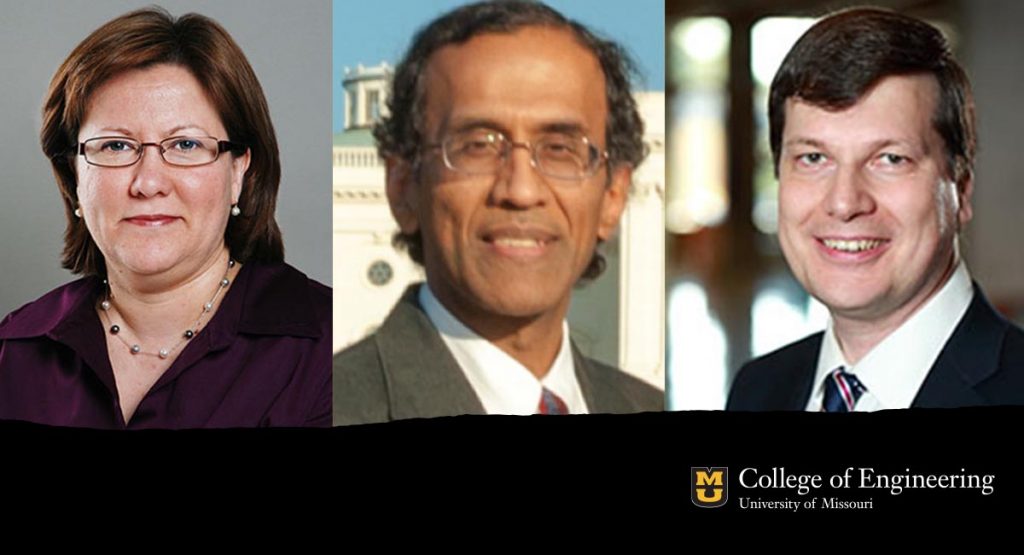October 21, 2021

When it comes to medical imaging, a picture is worth a thousand words — as long as you have the ability to analyze it accurately. One of the goals of this year’s Applied Imagery Pattern Recognition (AIPR) Workshop was to bring together domain experts to explore and demonstrate artificial intelligence, machine learning, signal and image analysis capabilities for applications including medicine, healthcare, geo-spatial analytics, and intelligent surveillance.
In its 50th year, AIPR is one of the longest-running conferences under the umbrella of the Institute of Electrical and Electronics Engineers. For the second year, Mizzou Engineering hosted the virtual event, which has historically been held in Washington, D.C.
This year’s workshop was around the theme of Artificial Intelligence (AI) in Medicine, Healthcare and Neuroscience, with many of the presentations and posters focused on the use of medical imaging, said Filiz Bunyak, assistant research professor in the Department of Electrical Engineering and Computer Science.
“Medicine and health care depend heavily on imaging, but it doesn’t stop there,” said Bunyak, who co-chaired the program along with Stefan Jaeger from the National Institutes of Health. “While imaging technologies have advanced considerably, analysis is still lagging behind. Most medical images are only inspected visually by clinicians, scientists, or other domain experts.
There is a growing need for computational methods to take full advantage of the complex image data to help advance scientific understanding and support clinical decision-making.”
AI and machine learning can help to analyze those images automatically. That’s important because it cuts down on potential human error of manual analysis, and it’s especially important in resource-poor areas that may not have the clinical expertise to inspect and draw conclusions from medical images, Jaeger said.
Already, he said, machine learning has shown progress.
“There are several good examples, such as detecting skin cancer with machine learning or retina image analysis for diabetic retinopathy detection,” he said. “In radiology, many people are working on this, and several hospitals have their own machine learning groups. It requires tight collaboration between medical experts and machine learning experts.”
One of the main challenges, Jaeger said, is ensuring that these deep learning systems are transparent and unbiased. For instance, machines must be trained using a variety of imagery from diverse groups.
This year’s AIPR Workshop featured 50 presentations from academia, government and industry. The three-day conference had participants from around the U.S., as well as India, Thailand and Vietnam. The conference featured 15 presentations from College of Engineering faculty and students covering topics from biomedical signal and image analysis, neuroscience, to visual surveillance and material science.
Despite the challenges of the COVID-19 pandemic and hosting a virtual meeting for the second time, AIPR attracted top leaders in their field as keynote speakers covering a variety of topics ranging from tracking infectious diseases, three-dimensional brain mapping, using trusted, explainable AI as a physician’s diagnostic assistant, cyber-hardening AI to protect against adversarial attacks and preemptively developing vaccines, said Kannappan Palaniappan who was the Conference Co-Chair of AIPR in 2020 and on the program committee for 2021.
“MITRE was a generous sponsor this year and we hope to have a more formal celebration of the golden jubilee in person in 2022 with retrospectives and visionary panel talks,” said Palaniappan, a professor of electrical engineering and computer science at Mizzou. “One of my favorite quotes from the conference that reflects the exciting future of AI in next generation precision medicine was by Patricia Brennan who observed that, ‘We are just at the beginning of image-based medicine.’”
Keynote speakers included:
- Richard Maude: Head of the Epidemiology Department at Mahidol-Oxford Tropical Medicine Research Unit, Bangkok, Thailand, and Associate Professor in Tropical Medicine at the University of Oxford. Maude discussed his work on using aerial images to track malaria in remote areas and small villages where ground mapping is difficult.
- Michael Hawrylycz: Investigator and Director of Data Science and Informatics at the Allen Institute for Brain Science. In his talk, Hawrylycz explored classic and novel techniques in image processing and analysis, as well as approaches to determining cell types in the brain.
- Tara Schwetz: Assistant Director for Biomedical Science Initiatives in the White House Office of Science and Technology Policy. Schwetz updated the group on the progress of the Biden-Harris Administration’s proposed Advanced Research Projects Agency for Health. The ARPH is a novel, transformative approach to support biomedical and health research and to speed innovation.
- Patricia Brennan: Director of the National Library of Medicine, one of the 27 Institutes and Centers of the National Institutes of Health. She discussed the library’s robust research portfolio, in which investigators are using a broad range of machine learning and AI strategies to investigate diverse image types. She also summarized critical assumptions and issues researchers need to face for effective application of imaging and advanced analytics in biomedical research.
- Fleming Lure: Chief Product Officer, MS Technologies Corp. Lure discussed using machine learning to assist physicians and researchers in the interpretation of medical images, improvement of workflow and decision support. He also discussed taking clinical evaluation through FDA approval to large-scale clinical application.
- Mikel Rodriguez: Director of The Artificial Intelligence and Autonomy Innovation Center at MTRE labs, which sponsored the workshop. Rodriguez spoke about the challenges of AI systems, including adversarial attacks on AI, and how MITRE is working on a national project called ATLAS (Adversarial Threat Landscape for Artificial-Intelligence Systems) to overcome these issues to enable safer more broader adoption of AI and machine learning.
The workshop also included two special sessions on machine learning for cryo-electron microscopy and signal analysis and modeling in neuroscience that shed light on two biomedical areas at the forefront of innovation. These special sessions were chaired by Tommi White (former associate director of the University of Missouri Electron Microscopy Core), Alberto Bartesaghi (Duke University) and Jing Wang and Ilker Ozden (University of Biomedical, Biological & Chemical Engineering) respectively.